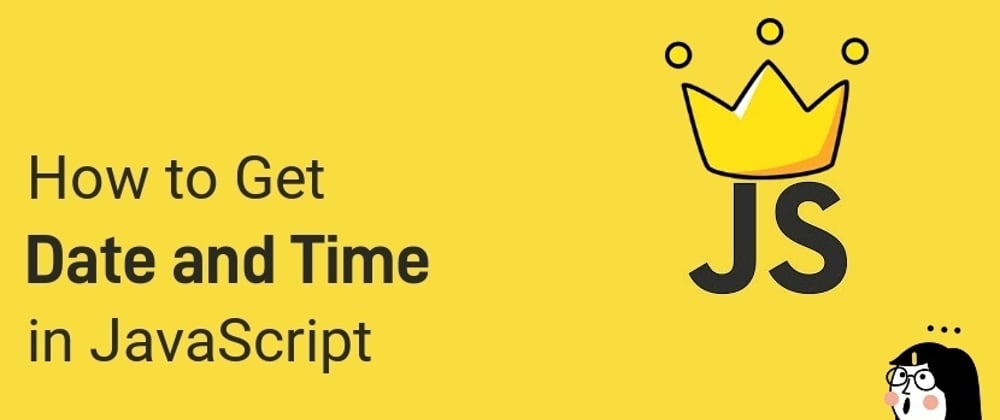Let’s meet someone amazing today 😁, haha a new built-in object: Date. In Javascript, we can easily work with Date & Time using the Date class. To create an object of this type we use the new keyword.
// Creating a Date object
var dateObj = new Date();
console.log(dateObj);
By doing this, we create an object with the current date and time formed by weekday, month, day, year, hours, minutes, seconds, and timezone. Now that's friggin precise 😝.
Methods of the Date object 😵
| Method | Description |
|---|---|
| getDate() | Returns the day of the month (1 to 31) |
| getDay() | Returns the weekday (0 - Sunday to 6 - |
| Saturday) | |
| getFullYear() | Returns the full year (YYYY) |
| getMonth() | Returns the month (0 to 11) |
| getHours() | Returns the hours (0 to 23) |
| getMinutes() | Return the minutes (0 to 59) |
| getSeconds() | Returns the seconds (0 to 59) |
| getMilliseconds() | Returns the milliseconds (0 to 999) |
| getTime() | Returns the number of milliseconds since the |
| Epoch(Jan 1st, 1970, 00:00:00) | |
| setTime() | Creates a specific date from milliseconds |
| since the epoch. |
What is UNIX EPOCH?😰
The Epoch is present in most programming languages. We can consider it the starting point of counting the time. This is useful to do calculations with date and time.
Javascript uses the Unix Epoch, which is: Jan 1st, 1970, 00:00:00, UTC.
A Time Chart for reference 😅
| Time | Milliseconds (ms) |
|---|---|
| 1 second | 1,000 |
| 1 minute | 60,000 |
| 1 hour | 3,600,000 |
| 1 day | 86,400,000 |
| 1 year (365 days) | 31,536,000,000 |
How to calculate how many hours have passed since the Epoch? 😬
var Obj = new Date();
Obj = Obj.getTime();
var hours = Obj / 3600000;
console.log(Math.floor(hours));
Passing Argument to Date() 😷
We created date objects without passing any arguments, this is why they represented the current time but we can also use them with specific objects or better to say a specific number of objects.
| Numeric arguments | Time represents |
|---|---|
| One | milliseconds since the epoch |
| Two | years and month (months go from 0 to 11) |
| Three | years, month, and day |
| Four | years, month, day, and hours |
| Five | years, month, days, hours, minutes |
| Six | years, month, day, hours, minutes, and |
var Obj = new Date(2021,1,24);
console.log( Obj );
We can also pass strings as an argument and in different formats
- ISO date: "2020-03-18" (YYYY-MM-DD)
- Short Date: "03/18/2020" (MM/DD/YYYY)
- Long Date: "Mar 18 2020" or "18 Mar 2020"
I hope you guys have learnt and saved it for later reference
and if you found my grammatical mistakes then don't forget to comment them 😂






Oldest comments (8)
Now this is something really useful bro😎
😇thanks
Nicely put. However one of the most important skills for beginners is to be able to read documentation, such as this
Well, when I started reading MDN Docs, I was like what the hell, who puts so much things all together, hyperlink after hyperlink... But then after time, I understood that not every hyperlink is meant to be opened, what you came for is important and all you have to do is just stick to that
You said right
It's so important for beginners to understand
regarding the other comments:
I think it's good to write technical things down as you've personally understood it, even if it is already documented somewhere. If everyone relied only on docs, then who would be blogging?
anyways nice work, you might want to also check out libraries like date-fns to further help you with working with dates.
So glad to see such a generous person on the comments
Thanks
And definitely will check that
And if I learnt how to use them and work with them, then will write about them also lol 😂
Some comments may only be visible to logged-in visitors. Sign in to view all comments.